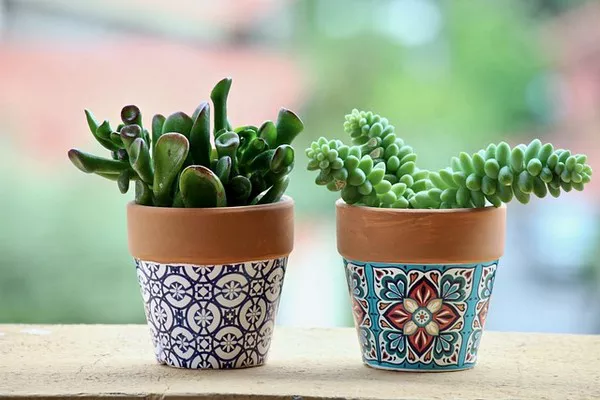Succulents, with their fascinating array of shapes, colors, and textures, have gained immense popularity as indoor and outdoor plants. One of the most rewarding and cost-effective ways to expand your succulent collection is by propagating them from leaves. This method allows you to produce new plants from the parent succulent, ensuring genetic diversity and providing a sense of accomplishment. In this guide, we will explore the step-by-step process of growing succulents from leaves, along with essential tips to ensure success.
Selecting Healthy Leaves
The success of propagating succulents from leaves begins with selecting healthy leaves from the parent plant. Look for mature leaves that are plump and free from any signs of damage, disease, or pests. Gently twist or cut the leaves off close to the stem, ensuring that you have a clean break. While some suggest allowing the leaves to callus for a day or two before planting, recent research suggests that this step may not be necessary and that fresh leaves can be planted directly.
Preparing the Planting Medium
Choosing the right planting medium is crucial for successful propagation. Succulents thrive in well-draining soil that prevents excess moisture, which can lead to rot. A popular mixture for succulent propagation consists of equal parts of potting soil, coarse sand, and perlite or pumice. This combination provides the perfect balance of water retention and drainage.
Planting the Leaves
Once you have healthy leaves and a suitable planting medium, it’s time to plant the leaves. Gently insert the base of the leaf, where it was attached to the stem, into the planting medium. Make sure the leaf is partially buried in the soil while the tip remains above the surface. You can plant multiple leaves in a single container, ensuring they are spaced out to prevent overcrowding.
Caring for Propagated Leaves
After planting the leaves, proper care is essential to encourage successful propagation:
Light: Place the container in a location with bright, indirect sunlight. Avoid direct sunlight, especially during the hottest parts of the day, as it can cause the leaves to burn.
Watering: Unlike mature succulents, propagated leaves don’t require frequent watering. Mist the soil lightly to keep it slightly moist but not saturated. Overwatering can lead to rot, while underwatering can hinder growth.
Humidity: Creating a slightly humid environment can promote root growth. Cover the container with a clear plastic dome or place it in a plastic bag with holes for ventilation.
Temperature: Succulents generally prefer warm temperatures. Aim for a temperature range between 65°F and 75°F (18°C – 24°C) for optimal growth.
Root Development and Growth
After a few weeks, you’ll begin to notice small roots emerging from the base of the leaves. This is a positive sign that your propagating efforts are paying off. As the roots develop, you’ll also notice tiny rosettes forming at the tip of the leaves. These rosettes are the beginnings of new plants.
Transplanting the New Plants
Once the new plants have grown enough and have a few leaves of their own, they can be transplanted into their individual pots. Carefully remove each new plant from the planting medium, taking care not to damage the delicate roots and rosettes. Plant them in pots with well-draining succulent soil.
Caring for Young Succulents
The care routine for young succulents is similar to that of mature ones, with a few adjustments:
Light: Provide bright, indirect sunlight. As the new plants grow and mature, they can gradually tolerate more direct sunlight.
Watering: Gradually increase the amount of water you provide as the new plants grow. Allow the top inch of soil to dry out between waterings.
Pot Size: Succulents prefer snug pots. Choose a pot that is only slightly larger than the root ball of the plant.
Fertilization: Once the new plants are well-established, you can introduce a diluted, balanced fertilizer during the growing season (spring and summer). Avoid fertilizing during the dormant winter months.
Patience and Persistence
Growing succulents from leaves is a rewarding process that requires patience and persistence. It’s important to note that not every leaf will successfully propagate. Some leaves may wither or not develop roots, and that’s perfectly normal. Over time, as you gain experience, you’ll refine your techniques and increase your success rate.
Conclusion
Propagating succulents from leaves is a captivating journey that allows you to witness the miracle of new life emerging from a single leaf. By following the steps outlined in this guide and providing the right conditions, you can expand your succulent collection and share the beauty of these fascinating plants with others. Remember, each leaf carries the potential to become a thriving succulent, making the propagation process an embodiment of nature’s resilience and growth.


